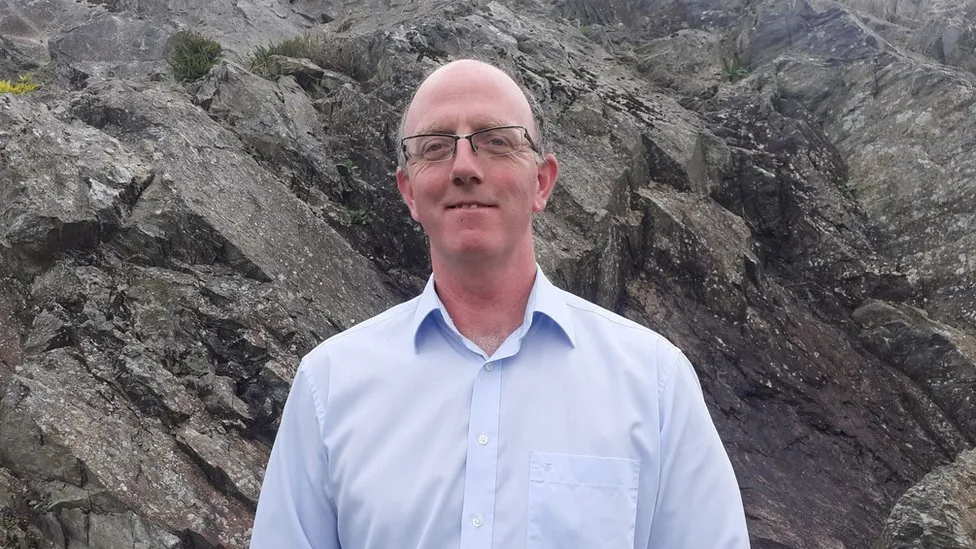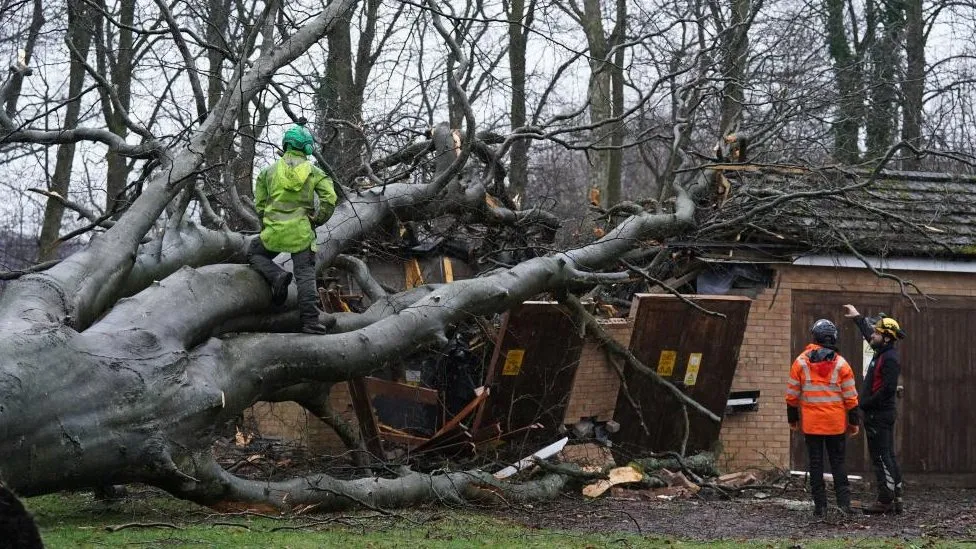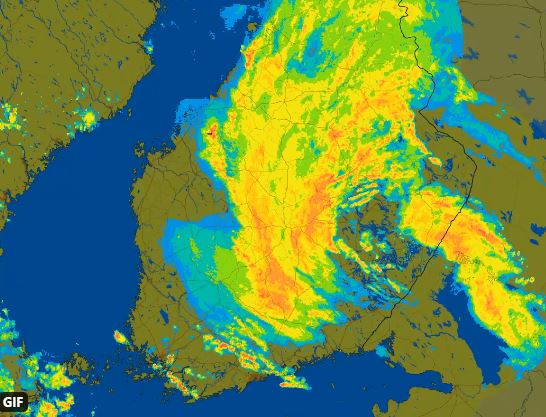Storms: Agnes, Ciarán and Olga among 2023-24 names
This is the ninth year storms have been given names.
For the 2023/24 season, the Met Office has named a number of storms after “those who work to keep people safe in times of severe weather”.
They include Ciarán Fearon, from the Department for Infrastructure in Northern Ireland.
He works to share information on river levels, coastal flooding and the impact of severe weather.
“I work closely with local communities in Northern Ireland and multi-agency partners to help keep everyone as warned and informed as possible,” said Ciarán.
“We need to respect each weather event and this work, particularly during periods of severe weather and storms, helps to ensure that we are all as well prepared as possible to help reduce the impact of such events.”
Also on the list of names is Jocelyn, named by Met Éireann, the Irish weather service, after Dame Jocelyn Bell-Burnell, a leading astrophysicist from Northern Ireland.
She told BBC News NI it was “a big surprise”, but she thought it was “a nice idea”.
“It makes the storms more memorable and helps the forecasters get the story across,” she added.
“Jocelyn would be the tenth storm of the year, and hopefully they won’t get that far.”
While wind is the main consideration for naming a storm, additional impact from snow or rain will also be taken into account.
The practice, which began in 2015, has gained popularity and recognition for its effectiveness in communicating the potential disruption of storms to the general public.
The initiative is aimed at raising awareness of potentially damaging, disruptive, and life-threatening severe weather.
Will Lang from the Met Office said: “Naming storms helps to ease communication of severe weather and provides clarity when people could be impacted by the weather.”
In 2015, the UK and Ireland jointly decided to start naming storms, taking inspiration from the successful model used by the United States.
The aim was to make it easier for people to follow and engage with weather forecasts, as naming storms makes them more relatable and memorable.
“We are delighted to celebrate science and scientists in this year’s names” said head of forecasting at Met Éireann, Eoin Sherlock.
“As part of our process we asked the public to choose the name for the letter ‘A’, resulting in Agnes, after Irish astronomer and science writer Agnes Mary Clerke.”
The naming process
Содержание статьи:
The process of naming storms involves alternating between male and female names, which are chosen from a list of suggestions submitted by the public.
One of the key factors that has contributed to the success of the naming system is the public’s involvement.
People are encouraged to submit their suggestions for storm names, fostering a sense of community, engagement and ownership in the process.
This engagement further emphasises the importance of being weather ready.
The letters Q, U, X, Y and Z are not used, which is consistent with international storm-naming conventions.
Storms named by other countries keep their name if they reach British, Irish or Dutch shores.
Quiet storm season
Friday’s announcement follows the quietest year for named storms since the initiative began.
Just two were named locally in the past 12 months and both occurred in August,
Storm Antoni hit on 5 August, followed by Storm Betty on the 18th.
Two others, Otto in February and Noa in April were named by the Danish and French respectively.






